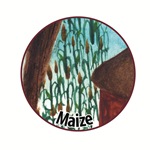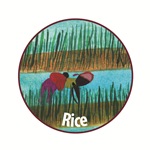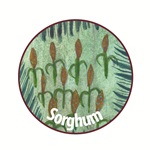Comparative Genomics InfoCentre
- Comparative Genomics Research Initiative
- Annual reports:2013 – read online |
 2013 – download PDF (762.2 kB) | 2012 – read online |
2013 – download PDF (762.2 kB) | 2012 – read online |  2012 – download PDF (356.16 kB) | previous years
2012 – download PDF (356.16 kB) | previous years - Multimedia information
- Podcasts – aluminium toxicity (sorghum) | Phosphorus efficiency (rice)
- Blogposts – comparative genomics in cereals | other genomics blogposts
- Videos
- Rice: Phosphorus efficiency in rice – Press release and Blogpost | Indonesia | Back story – how it all began
- Updates on: aluminium tolerance (maize) | sorghum work in Kenya (newspaper article)
- Genomic Products
|
Maize facts & figures |
Rice facts & figures |
Sorghum facts & figures |
|
Agricultural Genomics Network (AGN) hosted on the IBP website, with a discussion forum on LinkedIn |
Main objectives:
|
| Products | Please remember to 'shop' for genomic resources through our Product Catalogue |
Comparative genomics - Agricultural genomics network
With an objective of making genetic research and breeding applications cost-effective by enhancing adoption of modern genomic technologies, GCP is exploring possible initiation of the Agricultural Genomics Network (AGN) as a part of the Integrated Breeding Platform (IBP). AGN is expected to have the following three main components:
- Develop a community to discuss advances in genomics and provide critical appraisal of genomic technologies, tools and approaches
- Develop a portal that will present the information on tools, resources developed by GCP or available in the public domain either by hosting some of them, or by providing links to other existing databases and portals, and
- Broker access to economically priced large scale sequencing, construction of variety of (BAC, cDNA, fosmid) libraries, physical mapping, sequencing and re-sequencing, etc, provided by third-party service providers (eg. BGI, JCVI, NCGR).
Comparative genomics - Aluminium tolerance and Phosphorus efficiency - Maize
Marker-assisted backcrossing for improving phosphorus-use efficiency and tolerance to aluminium toxicity via Pup1 and AltSB genes in maize (G7010.03.05)
| Target country |
Kenya |
| Lead institute |
Moi University/Kenya Agricultural Research Institute (KARI) |
| Partners |
|
Phosphorus (P) deficiency and aluminium (Al) toxicity are two of the most important constraints responsible for low maize productivity on acid soils worldwide, and particularly in Africa where because of resource limitations low input agriculture is the norm
This project will use molecular breeding approaches as well as conventional breeding to speed up development of maize varieties adapted to the acid soils of Africa. The research proposed here is closely connected to the other two maize projects on comparative genomics, and should result in significant improvements in maize yields on acid soils in Kenya and other African countries, as well as in Brazil.
Objectives
- Screening of Kenyan maize germplasm for Al tolerance in nutrient solution, for ZmMATE gene expression, and for P efficiency in the field
- Development of maize topcrosses for assessing yield performance under acid soil conditions in Kenya
- Evaluation of Kenyan maize topcrosses, synthetics and hybrids for Al tolerance and P efficiency in the field
- Marker-assisted selection for genes/QTLs to improve Al tolerance and P-use efficiency in locally adapted maize germplasm
- Develop mapping populations using the highly aluminium-tolerant Kenyan sources, 203B, K4 and/or CON 5
- Training and capacity building
Comparative genomics – Aluminium tolerance and phosphorus efficiency – Rice
Improved rice cultivars for Asian problem soils: Pyramiding of major genes/QTLs for tolerance to phosphorus deficiency and aluminium toxicity (G7010.03.04) 
| Target country |
Indonesia |
| Lead institute |
International Rice Research Institute (IRRI) |
| Partners |
|
In Asia, about 60 percent of rainfed rice is grown on soils that are affected by multiple stresses. These typically include phosphorus (P) deficiency as well as acidity, salinity, aluminium (Al) toxicity and drought. The development of rice cultivars with multiple stress tolerance is therefore considered an important breeding goal.
This project seeks to develop breeding lines with multiple tolerance through pyramiding of individual QTLs, starting with combined tolerance of P deficiency and Al toxicity. This is particularly relevant in order to fully benefit from Pup1 gene because the tolerance mechanism conferred by Pup1, high relative root growth, would be compromised if cultivars were sensitive to Al toxicity since excess Al severely inhibits root growth and thereby water and nutrient uptake.
P deficiency and Al toxicity are soil-related stresses that typically coincide on acid soils that are very common in the humid tropics. The Pup1 locus has shown its potential in partly overcoming the negative effects of P deficiency. Introgression of Pup1 into widely grown upland and irrigated rice varieties following the marker-assisted backcrossing approach that was successfully applied for submergence tolerance is near completion and the first field experiments were conducted in Indonesia. This project will continue and complete these activities within the commissioned project G4008.41 (Application and validation of the major QTL phosphate uptake 1 [Pup1]), which ended in December 2009. This will ensure that the developed breeding lines and Pup1 marker technology are handed over to country partners in Asia and Africa for testing and development of local Pup1 varieties. –
Objectives
- Map Al-tolerance loci in populations developed from highly Al-tolerant Indonesian upland varieties.
- Develop rice breeding lines with tolerance of P deficiency, drought, and Al toxicity through pyramiding of major target QTLs.
- Disseminate seeds to country partners and assist them in the implementation of screening protocols and marker technology.
- Enable Pup1 cloning in sorghum and maize by providing gene-specific markers and conduct screenings.
Facts and figures on rice (IBP webiste)
Comparative Genomics – Phosphorus efficiency – Sorghum
Improving phosphorus efficiency in sorghum by the identification and validation of sorghum homologues for Pup1, a major QTL underlying phosphorus uptake in rice, and identification of other P efficiency QTLs (G7010.03.06)
| Target countries |
Kenya, Niger |
| Lead institute |
Empresa Brasileira de Pesquisa Agropecuária (EMBRAPA, Agricultural Research Corporation), Brazil |
| Partners |
|
Low productivity due to soil constraints and a lack of properly adapted crop cultivars is a serious problem in many parts of Africa, where sorghum is a staple food supporting millions of the rural poor. Pup1 is a major QTL located on rice chromosome 12 that underlies phosphorus (P) efficiency and has the potential to increase P acquisition efficiency in other cereals. Research findings from a long-term collaboration between IRRI and JIRCAS has resulted in the fine-mapping of the Pup1 locus to a ~150 Kb region on chr 12, and 2–4 high-quality Pup1 candidate genes have been identified.
Taking advantage of the complete sequence of the sorghum genome, this project seeks establish a framework based on comparative genomics to identify sorghum Pup1 homologues and will validate their role as bona fide genes underlying tolerance to P deficiency. The project further aims to lay the foundation for a molecular breeding programme targeting marginal soils in Niger and Kenya and other areas of Sub-Saharan Africa to improve food security and farmer income.
Objectives
The overall objective is to identify genes related to tolerance to P deficiency in sorghum, with a focus on Pup1 homologs in sorghum and the sorghum Al tolerance gene, AltSB, which will be transferred to the Sorghum Molecular Breeding (SorghumMB) project for deployment into breeding programmes. Specific objectives are:
- Identify homologs of rice Pup1 that are associated with traits related to P-deficiency tolerance in sorghum and also clarify the role of the AltSB gene in tolerance to low P.
- Validate genes associated with P deficiency tolerance in sorghum.


